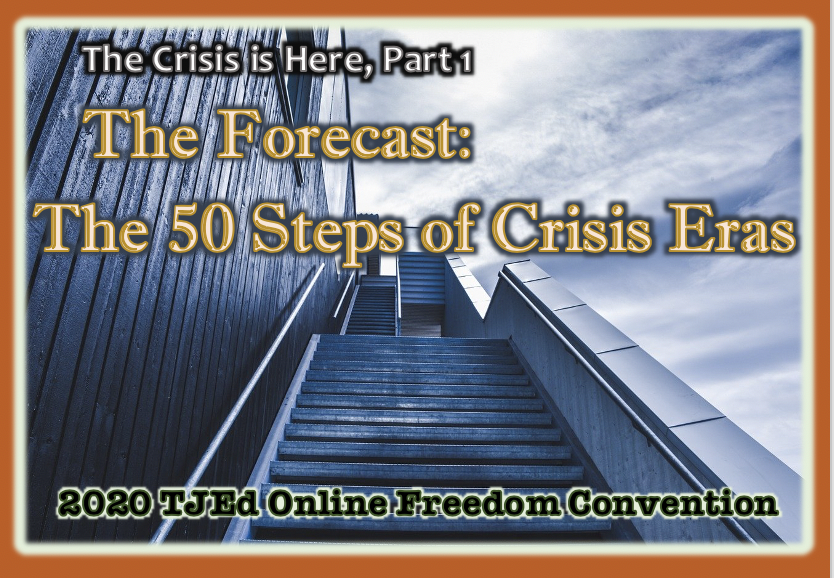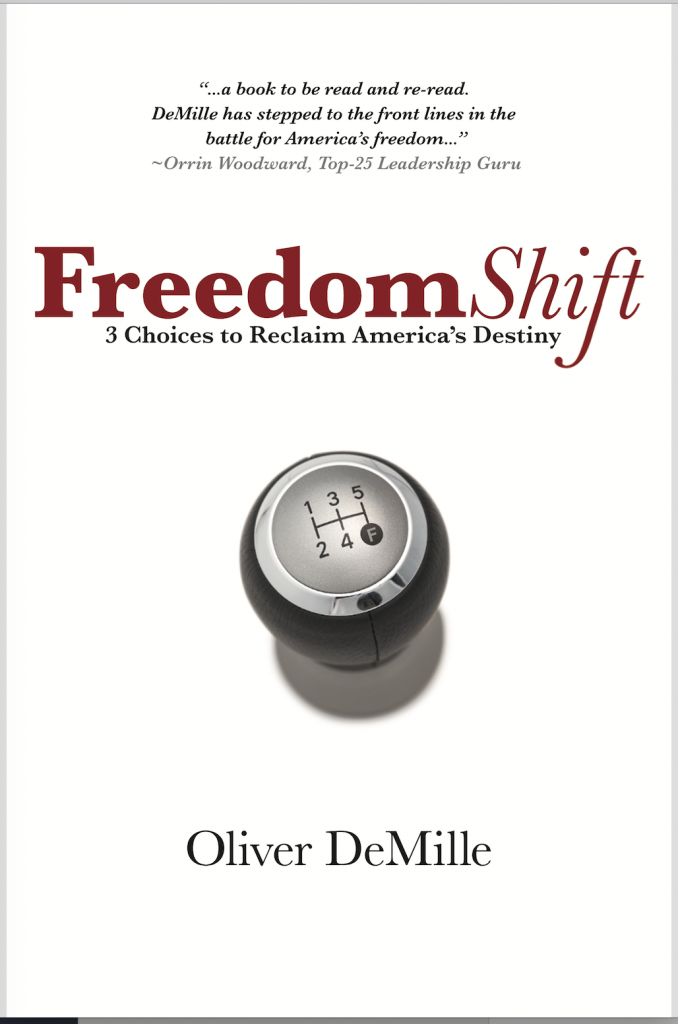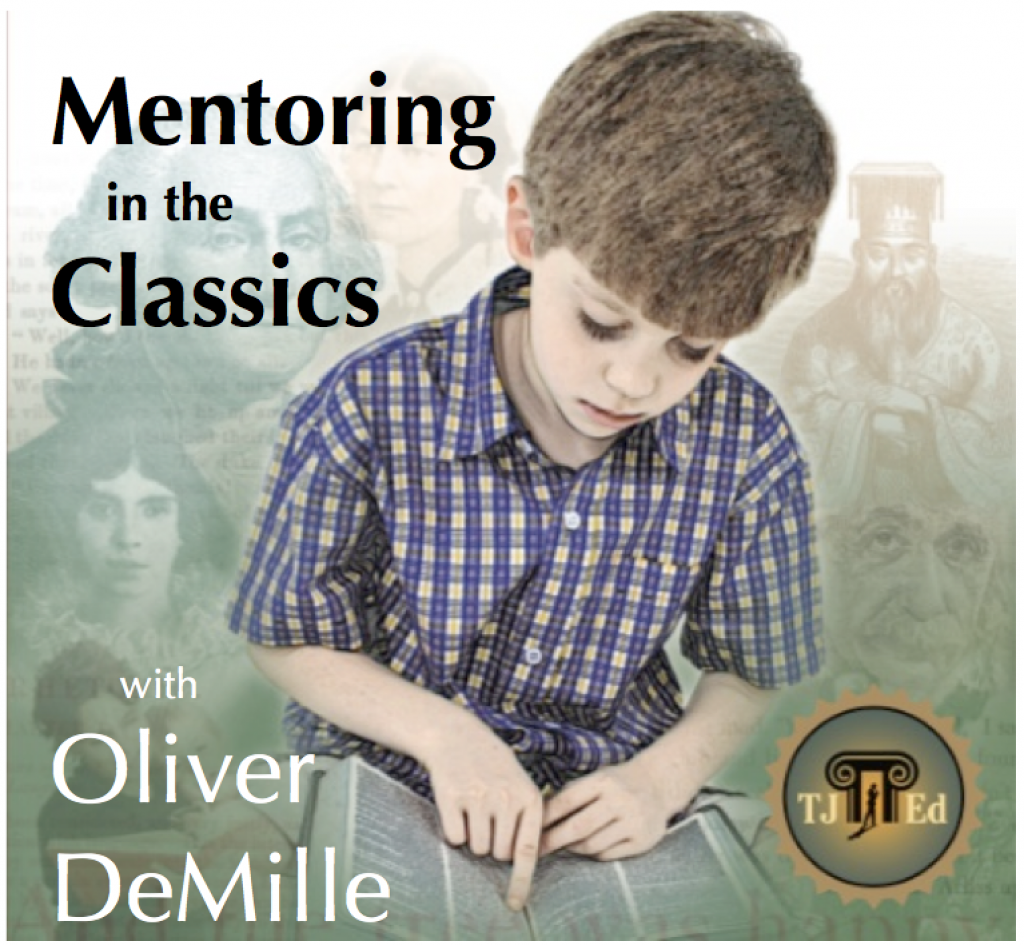What Every Parent (and Citizen and Leader) Should Know Right Now About College
August 1st, 2025 // 9:16 am @ Oliver DeMille
 I’ll be brief. College is changing rapidly, and parents, leaders and anyone who cares about education, freedom and our society needs to know about and understand these changes. Specifically, they need to know about 7 significant changes that are happening right now in the college-university-credential-career system. These are dramatically impacting our nation. Yet for some reason these changes are not effectively making it into the hands of all, or even most, parents, students and others who care about our society.
I’ll be brief. College is changing rapidly, and parents, leaders and anyone who cares about education, freedom and our society needs to know about and understand these changes. Specifically, they need to know about 7 significant changes that are happening right now in the college-university-credential-career system. These are dramatically impacting our nation. Yet for some reason these changes are not effectively making it into the hands of all, or even most, parents, students and others who care about our society.
Let’s change that, right here. The purpose of this post isn’t to promote college, or to discourage it. For some young adults, college is the perfect thing, and others may thrive more in an alternative to college. But without a knowledge of these changes, nobody is fully informed and therefore it can be much more difficult to make the best decisions for each individual student—or for citizens to understand how these changes are impacting our national future.
1. Changing Views on College
 A lot of people, including many higher education experts, are questioning if college is worth the cost anymore. According to Gallup, high confidence in college and universities is down to just 36 percent, after being much higher for the last five decades. (“American’s Confidence in Higher Education Remains at All-Time Low” The Epoch Times, Pan)
A lot of people, including many higher education experts, are questioning if college is worth the cost anymore. According to Gallup, high confidence in college and universities is down to just 36 percent, after being much higher for the last five decades. (“American’s Confidence in Higher Education Remains at All-Time Low” The Epoch Times, Pan)
For those planning on careers in licensed fields such as medicine, law, public-school teaching, etc., college is necessary. For many careers it is not. The key is to research the options and personalize for your
2. Rising Costs and The Six-Year Degree
The price tag of a college education has skyrocketed. The annual cost of tuition has increased more than 179 percent in the last 20 years (“How are college costs adding up these days and how much has tuition risen?” USA Today, Chernikoff; “Buyer Beware: Fees Skyrocket Costs of Higher Education” Forbes, Ladany), and the cost of housing and other living expenses went up almost twice as fast as tuition rose during this time.
The average annual cost of attending an in-state 4-year public college increased from $3,500 per year in 2001 to $9,750 in 2022 (Education Data Initiative, EducationData.org, Hanson). This does not include the higher room and board prices (now averaging $12,917 a year), higher costs for books and supplies (now $1,220 per year), and almost $4,100 per year in additional expenses for students not living at home. (Ibid.)
 In addition to these increases, the average time to graduate with an undergraduate degree is now 6 years, not the traditional 4 years of decades ago. (National Center for Education Statistics) With all these expenses added together, the average total cost for a person to get a public undergraduate degree is estimated at between $168,000 and quite a bit higher.
In addition to these increases, the average time to graduate with an undergraduate degree is now 6 years, not the traditional 4 years of decades ago. (National Center for Education Statistics) With all these expenses added together, the average total cost for a person to get a public undergraduate degree is estimated at between $168,000 and quite a bit higher.
In comparison, though there are differing statistics on this, the approximate total cost for an undergraduate degree twenty years ago was around $58,000. Note that these numbers are for public institutions; most traditional private schools cost a lot more. None of these numbers include the cost of interest on student loans. The numbers of young college graduates filing for bankruptcy recently hit the all-time high. (“Is College Education No Longer Worth It?” The Epoch Times, Ford)
College can be a long-term boost to the finances of graduates; but this is not guaranteed, though many people assume it is. Financial returns over a lifetime based on college degrees depend a great deal on the student’s college major and first job after graduation. Over 52 percent of recent college graduates are underemployed, meaning they work in a job that doesn’t require a college degree. (“Most college graduates face underemployment upon bachelor’s attainment,” The Thomas B. Fordham Institute, Murray) Just over a quarter of graduates in some majors end up working in their field. In the STEMM (Science, Technology, Engineering, Mathematics, and Medicine) majors and other licensed fields this number is typically much higher. The 6 year average time to get an undergraduate degree is a major change from the 4 year model of past decades.
3. The Real Numbers and the Skilled Careers
 Many parents and grandparents are wondering: What is college even like now, compared to when they attended? The old myths about college graduates receiving a million dollars more in lifetime earnings than non-college peers have been debunked, because too many factors weren’t included in that statistic, like the added costs of student loans and interest, the 4-7 fewer years those with degrees spend out of the work force, the extra savings and investing the non-college person makes for 4-7 extra years, the significant differences in lifetime earnings between different academic majors—and between males and females, and other demographic groups—etc.
Many parents and grandparents are wondering: What is college even like now, compared to when they attended? The old myths about college graduates receiving a million dollars more in lifetime earnings than non-college peers have been debunked, because too many factors weren’t included in that statistic, like the added costs of student loans and interest, the 4-7 fewer years those with degrees spend out of the work force, the extra savings and investing the non-college person makes for 4-7 extra years, the significant differences in lifetime earnings between different academic majors—and between males and females, and other demographic groups—etc.
In certain majors, college graduates still make a lot more than non-credentialed workers, but in many majors they don’t. And demographic trends are greatly increasing the demand for many non-college skilled trades and careers (e.g. construction managers, electricians, plumbers, business owners, dental hygienists, various types of therapists, technicians, and high-tech roles, etc.), a number of which are increasingly more lucrative than college degrees in many majors.
For example, consider the “Doctor vs. Plumber Debates” about which career path is wealthier at age 42. There are lots of articles and videos on this. Surprising and interesting. A little folksy at times, but important information.
4. Fewer Students and Cutting Programs
Because of population trends, starting in the fall semester of 2025 and for many years ahead the number of college-age students will be significantly smaller than it has been up to now (“A looming ‘demographic cliff’: Fewer college students and ultimately fewer graduates” NPR, Marcus), meaning major economic downturns in higher education. Decreasing enrollments have led hundreds of campuses to close recently, and this trend is accelerating.
 With the added reality of a lot more college-age students opting for non-college alternatives, even most large prestigious schools are cutting faculty, staff, majors and various programs—or planning to make significant cuts in the years ahead.
With the added reality of a lot more college-age students opting for non-college alternatives, even most large prestigious schools are cutting faculty, staff, majors and various programs—or planning to make significant cuts in the years ahead.
Parents and students must do their research before enrolling to make sure the programs you’re seeking will still be there in 5-7 years when most of this year’s new freshman will graduate and the number of students in college will be significantly decreased.
5. A Lot More Alternatives
There are numerous popular and increasingly accepted alternatives to on-campus college education, including multiple new forms and styles of learning, job and career training.
 For example:
For example:
- gap year projects
- apprenticeships
- internships
- certifications from high-tech online training programs—many of them 1 year to 18 months in duration rather than 4-7 years
- online certificate programs
- bootcamp learning
- community colleges
- tech schools
- online college course options like those offered by Coursera, EdX, Udemy, Khan Academy, Udacity and many others
- great college-level programs that emphasize learning and ignore credits and grades—like non-credit classes from Harvard, Yale, MIT, Standford, Hillsdale, and hundreds of other colleges and universities
- high-quality educational organizations that aren’t colleges or universities such as The Great Courses, MasterClass, TedX, SkillShare, HubSpot Academy
And of course, my favorite: TJEd Depth.
Also, the movement by certain billionaires and other educational leaders to help some of the best and brightest young adults skip college and build a business, partner on an entrepreneurial venture, or join a start-up team. Simultaneously, the alternative credentials (not degrees) sector is growing rapidly, and alternative non-college credentials are now accepted by many big organizations, including IBM, Google, Bank of America, Apple, Amazon, the U.S. Federal Government, a growing number of U.S. state governments, and many more. (“How Alternative Credentials are Shaping Modern Education,” Higher Education Today; “Organizations that Accept Alternative Credentials in Hiring,” Google AI Overview; “The Rise of Alternative Credentials in Hiring,” SHRM.org)
Many experts and organizations now promote new “post-industrial-age” credentialing systems not based on degrees but rather on proven competencies, knowledge, experience and skills. This trend is increasingly known as the “skills first” model.
6. Woke-ism and the Shadow Curriculum
 Left-leaning political activism on most campuses is real and deeply concerning. The number of young adults from homes with traditional family values, pro-faith beliefs, and/or conservative views who are now adopting leftist, anti-family, anti-morality and/or anti-faith perspectives and even aggressively going “woke” during their college years is alarming.
Left-leaning political activism on most campuses is real and deeply concerning. The number of young adults from homes with traditional family values, pro-faith beliefs, and/or conservative views who are now adopting leftist, anti-family, anti-morality and/or anti-faith perspectives and even aggressively going “woke” during their college years is alarming.
A number of experts are concerned that a major focus of many colleges and universities in recent years seems to have shifted to things happening outside the classroom: protests, political arguments, shouting down visiting speakers (on campus but also in classes), mass walk-outs from classes and assemblies, protestors physically stopping students from going to classes, assaults based on political or religious views, etc.
It is important to look into the schools you’re considering and find out what kinds of things go on there.
7. Direct Admission Options
Because of demographic trends and declining enrollments, a number of colleges and universities have adopted or ramped up direct admission policies. (“Even if They Didn’t Apply, Some Students Get College Admission Offers” The New York Times, Carrns)
 Direct Admission means that a school accepts any student who meets certain criteria, such as a qualifying SAT or ACT score or a certain GPA, or other criteria—depending on the school. Qualifying students are guaranteed admission, and simply need to sign up, provide information the school can verify, and enroll.
Direct Admission means that a school accepts any student who meets certain criteria, such as a qualifying SAT or ACT score or a certain GPA, or other criteria—depending on the school. Qualifying students are guaranteed admission, and simply need to sign up, provide information the school can verify, and enroll.
This is streamlining the process for many students, and significantly decreasing the time and effort of getting into certain schools. It also cuts costs for the institution.
Over a hundred schools now offer direct admissions, including many state-run schools in over a dozen states (including Illinois, California, Texas, Minnesota, Idaho, Indiana, Washington, Hawaii, Utah, North Dakota, Wisconsin, Connecticut, Oregon and New York.) (“More state colleges are admitting students—before they apply” The Washington Post, Humphreys and Rizzolo) The number of direct admission schools is rapidly increasing.
One other thing that’s been around a long time, but is now increasingly prevalent, is online classes for credit that allow students to do much of their classwork from home or remote locations. In many schools these classes supplement in-class work, and in a growing number of schools the online coursework is the bulk of learning and in-class studies supplement the laptop or tablet learning.
In short: we’re living in an era of educational renaissance.
But all this change and these many new offerings have understandably sparked a lot of confusion about which of these alternatives work and which don’t. And which is best for a specific 18- to 24-year-old. Or older. Part of the challenge is that we don’t yet know which options will last and which will fade over time. And parents and students still must decide whether their main educational goals emphasize great learning or specific job credentialing.
 One more thought, which shocked me when I read about it in the excellent book, The Great Upheaval. Traditional on campus students aged 18-22 now account for less than 20 percent of college students. This number doesn’t even include students in the many non-college alternatives out there—it’s just about college students.
One more thought, which shocked me when I read about it in the excellent book, The Great Upheaval. Traditional on campus students aged 18-22 now account for less than 20 percent of college students. This number doesn’t even include students in the many non-college alternatives out there—it’s just about college students.
Another way to see this: More than 80 percent of actual college students are now non-traditional students, such as those in their 30s or older and those in distance studies on laptops at home or elsewhere rather than sitting in classrooms. Over 80 percent! Lots of changes. So many options. And more coming.
After all this, I’m left with two big questions:
1. What do we really want to happen with our current college/credentials/career system?
 The old system is struggling, mainly because industrial-age institutions are finding it very difficult to transition to the quantum age. But the old system also has some excellent features that have lasted for many decades. (I would say “centuries”, but the college system before 1944 was totally different than the system after 1944.) Most importantly, in terms of where we’re headed, a growing number of employers don’t trust the old 1944-2024 system. They want something new, something that fits today’s economy and needs. In other words, we’re going to get something new.
The old system is struggling, mainly because industrial-age institutions are finding it very difficult to transition to the quantum age. But the old system also has some excellent features that have lasted for many decades. (I would say “centuries”, but the college system before 1944 was totally different than the system after 1944.) Most importantly, in terms of where we’re headed, a growing number of employers don’t trust the old 1944-2024 system. They want something new, something that fits today’s economy and needs. In other words, we’re going to get something new.
Still, a lot of people don’t yet see the alternative credentials or learning systems as realistic replacements for the old college model. At the same time, student debt and young college graduate bankruptcies keep climbing; degrees in many majors simply aren’t delivering the “promised” financial returns. What is the best approach—for our children, the employers and the economy, the future of education and jobs, and the world?
- A: Would a return to the old-style system of colleges in the 1980s and 1990s—without all the confusing alternatives—be the best solution? One system, one standard of credentials?
- B: Would it be better to keep the old college-on-campus model for whoever wants it and simultaneously encourage new alternatives far and wide?
- C: Or would our best approach as a nation be to just dump the old and move on to the new—since it’s coming anyway, inevitably?
Your thoughts on this?
2. How bad would a major shift from the old college model to a new skills-based (non-degree-based) system hurt our nation?
 In my view, it might really help. For the past eight decades our colleges and universities have become less and less institutions of higher learning and more and more career training programs.
In my view, it might really help. For the past eight decades our colleges and universities have become less and less institutions of higher learning and more and more career training programs.
This system has done a lot of good for many people, of course, but it also lost some essential things along the way, like actual higher education—history, leadership skills, classics, the great books, principles of freedom, the liberal arts and sciences, etc.—which have been increasingly sidelined or in many schools entirely shelved.
We desperately need a reboot of these topics and skills in our society. The future of freedom, leadership, free enterprise and widespread prosperity depend on it.
But it shouldn’t be limited only to those who can afford for their youth to be on campus for 6 years. We need all youth to learn these things.
This is the big question: How can we re-implement actual higher education again?
What do you think?
~od
(NOTE: A sequel, or Part II of this article—with additional, different trends in college—is found in the Audio Presentation: “NEW 2025 UPDATE: MAJOR CHANGES IN COLLEGES & UNIVERSITIES”, which is part of the 2025 TJEd Education Convention. This article discusses key points that are NOT covered in the Audio Presentation—and vice versa.)
Want to go deeper?
- Audio presentation: “NEW 2025 UPDATE: MAJOR CHANGES IN COLLEGES & UNIVERSITIES” 2025 TJEd Education Convention, DeMille
- The Great Upheaval, Levine and Van Pelt, Johns Hopkins University Press
- Hacking College, Laff and Carlson, Johns Hopkins University Press
- Freedom Matters, DeMille, Obstaclés Press
- Paradigm Shift, Guzzardo, Obstaclés Press
- Who Needs College Anymore?, Delaski, Harvard Education Press
This post contains affiliate links. Thank you so much for your support!
Category : Blog &Business &Culture &Current Events &Economics &Education &Entrepreneurship &Featured &Generations &History &Information Age &Leadership &Liberty &Postmodernism &Producers &Statesmanship
The 5 Best Books I Read in 2024 By Oliver DeMille
December 19th, 2024 // 5:06 am @ Oliver DeMille
They are all worth reading. In fact, it was very difficult to narrow it down to just 5. With that said, here they are, along with some thoughts on why each one is great, and tips on things to look for as you go. If any of them pique your interest, get them and read… Enjoy the list!
- Insidious by Orrin Woodward. This book is fantastic! A must read, and a runaway for the #1 top book of the year. In fact, it’s so great that I wrote an entire article and review just to talk about the super-important ideas in this one book.
| Tip: Go read my article about this book here. |
- Government Gangsters by Kash Patel. It’s deep, spot on, and incredibly relevant to our world today. Patel outlines what needs to happen to get our government back, specifically to size it down wisely and make it follow the Constitution once again. And he tells us what to do as well as the specifics of how to do it. Great book! Fabulous read, whether you agree with his recommendations or not.
| Tip: Pay special attention to everything he says about “fencing”. This alone is worth the price of the book. And after you study this, also research the word “impoundment” as it relates to the Federal Government. So important. Indeed, Fencing and Impoundment may be as important in our time as Checks and Balances were in the time of the American Framers. Not that they should be, but you want to know what they are and how they are used. |
- Jane Austen’s Little Book of Wisdom compiled by Andrea Kirk Assaf. This small book is pure fun! Every quote is worth deeply pondering. You’ll truly benefit from the witty and profound wisdom it contains. I loved it. Whether you want to be a better leader, spouse, dad, mom, student, sibling, boss, or employee, or just improve yourself and your effectiveness in relationships and life, this book is great reading on two levels—the wisdom of the words, and the beauty of how Austen uses the language. It will put a little more poetry and charm into your personality! Or just bring more smiles to your face in the year ahead. Super fun.
| Tip: Read and ponder one quote each day. At this pace it will last almost a year—and the year will undoubtedly be better! |
Continue Reading >>
Category : Blog &Book Reviews &Citizenship &Community &Culture &Current Events &Economics &Education &Featured &Generations &Government &History &Independents &Information Age &Leadership &Liberty &Politics &Postmodernism &Producers &Prosperity &Statesmanship &Technology
The 2020 TJEd Online Convention is getting Rave Reviews!
April 6th, 2020 // 1:13 pm @ Oliver DeMille

Here’s what people are saying!
Many thanks to your whole family for all you do!
~ Jennifer Halverson
Watch the video trailer!
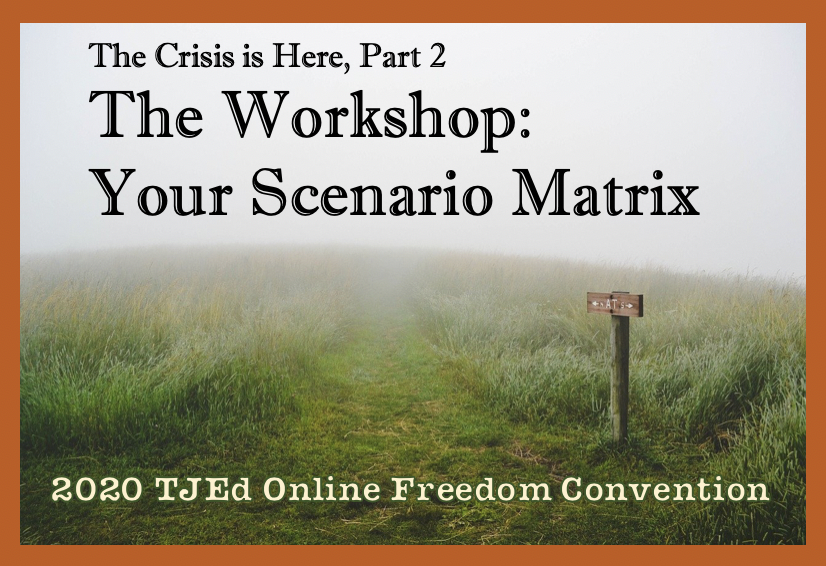 Listened to these talks in the convention today…I am speechless! I had chills the whole time I was listening! I’m excited to go back and do the planning section. Amazing how my perspective has changed so quickly. Going to have my husband listen, too. Thank you so much for this amazing resource!!!
Listened to these talks in the convention today…I am speechless! I had chills the whole time I was listening! I’m excited to go back and do the planning section. Amazing how my perspective has changed so quickly. Going to have my husband listen, too. Thank you so much for this amazing resource!!!
UPDATE: I just now worked through part of the matrix exercise. Wow, how powerful!
~ Rachael Breneman
 I just want to say thank you to you both. You have sacrificed so much for your mission and so many of us and our children have been blessed because of your sacrifice! I listened to The Crisis is Here part 2 from the 2020 Freedom convention today. On top of the wonderful exercise Oliver led and the incredible insight, I was also struck with how grateful I am that I have been so prepared for this moment.
I just want to say thank you to you both. You have sacrificed so much for your mission and so many of us and our children have been blessed because of your sacrifice! I listened to The Crisis is Here part 2 from the 2020 Freedom convention today. On top of the wonderful exercise Oliver led and the incredible insight, I was also struck with how grateful I am that I have been so prepared for this moment.
It is thanks in a large part to being mentored through TJEd that I have the family culture, understanding of turnings and history, life centered at home, classics on our shelves that teach us human nature, an appreciation for seasons and cycles and the confidence and ability to teach my family. While these times are uncertain, I don’t feel afraid or overly anxious. I’m actually looking forward to the next few decades and what “spring” will bring. I’m excited for my children and I to be a part of it!
~ Amy Updike
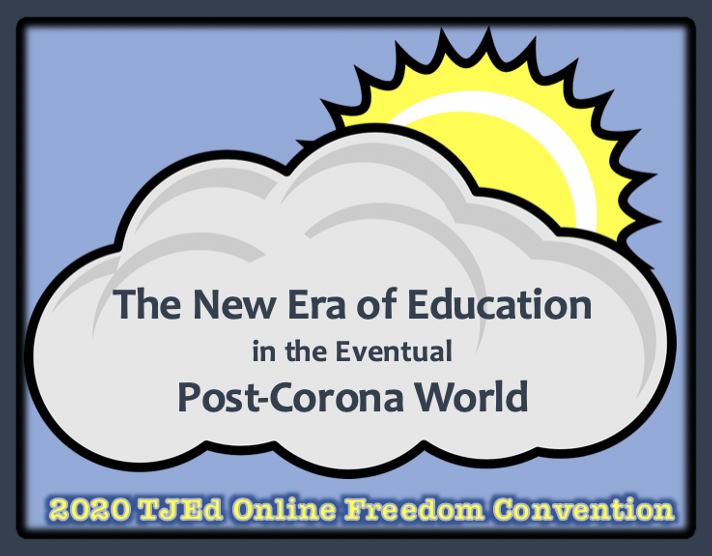 Before any of us realized what happened, the world changed, and it is very likely that for better or worse, nothing will be the same again.
Before any of us realized what happened, the world changed, and it is very likely that for better or worse, nothing will be the same again.
Now what?
I have learned a great deal from Oliver DeMille. The talks he has given already in this convention have really changed the way I am looking at what is happening right now, and he is just getting started.
If you want to know what to do to adapt to our new reality, I’d recommend signing up for this convention!
~ Colby Lyons
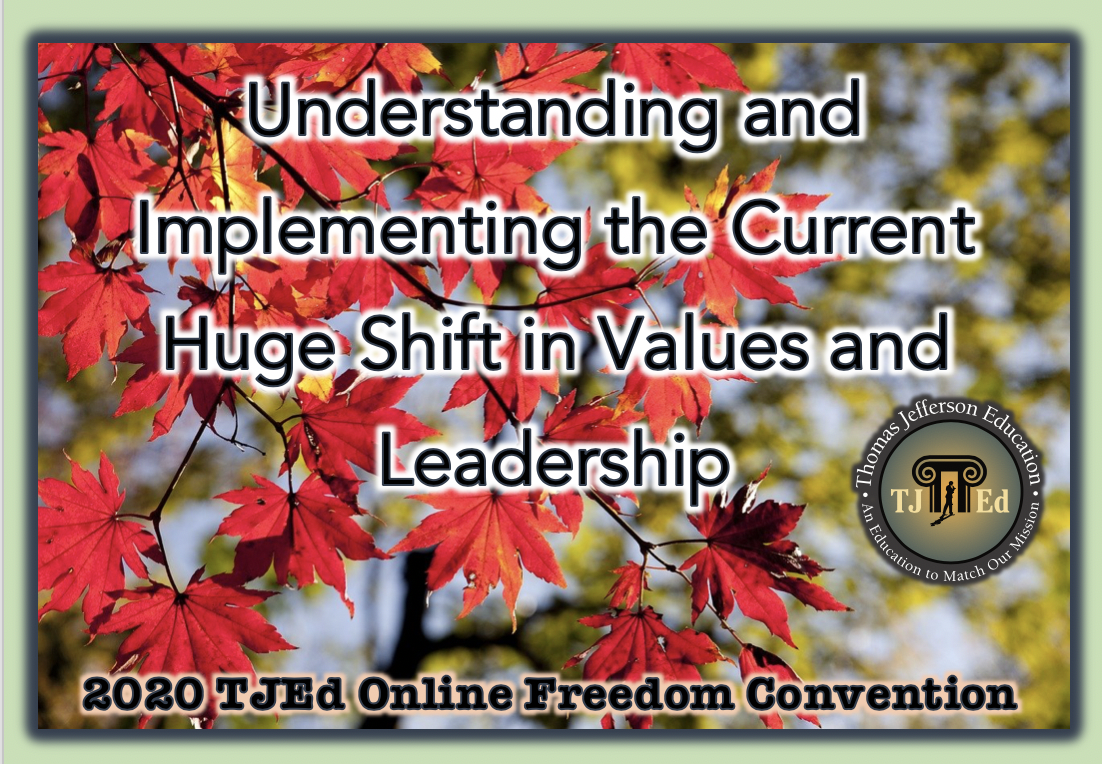 Oliver and Rachel, THANK YOU so much for this year’s convention! We just listened to the 2nd workshop and are so excited for this time in history!
Oliver and Rachel, THANK YOU so much for this year’s convention! We just listened to the 2nd workshop and are so excited for this time in history!
We’ve handled the crisis well because of our faith but this really got us pumped for our future!
My daughter, who is a senior, has struggled a little because she felt so uncertain of her immediate future.
Now, she’s happy and at peace that she is already on the right path to get through this crisis well. She loved the workshops so far! Can’t wait for the rest!
~ Kellee Clark
Watch the video trailer!
Join us for the 2020 Freedom Convention Here!
Special thanks to Lyle Mast of OR Sports for his contribution of 100 family scholarships!
And TJEd is matching that sponsorship to cover an additional 100 families!
If you need this assistance in order to participate in the convention, PLEASE don’t hesitate to request it; that’s exactly what it’s for, and we don’t want you to miss out!
Just click here to inquire and we’ll get you taken care of.
Category : Aristocracy &Blog &Business &Citizenship &Constitution &Culture &Current Events &Economics &Education &Entrepreneurship &event &Family &Featured &Generations &Government &History &Independents &Information Age &Leadership &Liberty &Mini-Factories &Mission &Politics &Producers &Prosperity &Statesmanship &Tribes
The Jefferson-Madison Debates: HOW TO KILL THE CONSTITUTION (IN 3 SIMPLE STEPS…)
September 3rd, 2019 // 9:43 am @ Oliver DeMille
A Review of 3 Books on the Future of Freedom
[*see titles below]
 If you care about freedom, this article may be one of the most important things you ever read. If you care about the U.S. Constitution, it is definitely this important.
If you care about freedom, this article may be one of the most important things you ever read. If you care about the U.S. Constitution, it is definitely this important.
Some of the most significant proposals to drastically change our political system were recently outlined in several very interesting books. The first that we’ll address here is entitled It’s Time to Fight Dirty, and the stated purpose of this book is to show how Democrats can fully beat Republicans by circumventing the Constitution, or in some cases just the current political system—within the lines, of course, not by coup or overthrow.
Part I: Gaming the Constitution
To get a sense of the scale and scope of the suggestions, consider the specific proposals in question. Whether upon reflection you conclude that these are dangerous and bad ideas, or on the contrary that they are a bunch of really excellent propositions, or whatever you think of them, understanding them is vital for anyone who cares about the future of America, and freedom. Indeed, I am impressed with the author of It’s Time to Fight Dirty for thinking about the Constitution so deeply. I wish a lot more Americans did so. I believe that given the full light of day, most people will support the Constitution rather than move to some other model of government. But as long as most Americans actually know very little about it, we’re in real trouble. This allows the enemies of freedom to tear it down bit by bit while few Americans even bother to take notice.
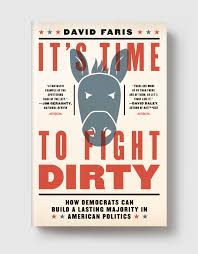 Here are some of the major proposals in It’s Time to Fight Dirty:
Here are some of the major proposals in It’s Time to Fight Dirty:
- “The 58 State Solution”[i]
By increasing the number of states, and carefully bringing to statehood areas that are already solidly “blue”, this suggestion quickly moves the entire nation to the Left. Then, without much effort, more states and more progressive senators can amend the Constitution at will. Leading candidates to become new blue states include the District of Columbia, Puerto Rico, and “Seven Californias”[ii], as it is described in the book (new states created by breaking California into multiple states).[iii]
Problem: In this scenario, the Constitution quickly becomes the plaything of a small group of powerful elites. They redefine it to their benefit. We would witness major alterations to our system, almost overnight, likely all in the direction of collectivist progressivism for the masses, with major exemptions and increased power for a select elite. Freedom would take major hits, and it would get worse over time.
- “The Neutron Option” or “Packing the Court”[iv]
According to It’s Time to Fight Dirty, this entails ending lifetime terms for justices and letting each president appoint 2 members to the Court. Or, as FDR attempted, wait until a Democrat is in the White House and then increase the size of the Court, with the Democratic president adding all the new justices.
Problem: Court-packing is, of course, always going to be a hyper-partisan venture, but the purpose of the third branch of government is to uphold the Constitution, not decrease its authority, or simply change it (or water it down) without Amendment. Either approach—Neutron or Packing—would almost certainly end the back-and-forth battle between conservatives and progressives, and thus disenfranchise about half the nation’s voters. The implementation of these proposals would mean Court-mandated changes to our entire system—and about half the nation’s voters would be permanently out of government power in all three branches–likely, forever.
- Scrap the Electoral College[v]
In this proposal, we would elect presidents by a straight national popular vote.
Problem: If the president is elected by straight national majority vote, none of the little states, or less populated states, will have much say in who rules the nation. The Framers wanted a prospective president to have to win “majorities in a majority of states”, with the impact of each state’s majority weighted by population. This is a little complex, but it keeps people living outside big cities, and in small and sparsely populated states, involved in our democracy. Without the Electoral College, most people who live outside the biggest cities and most populous states would have practically no say in electing our leaders. That’s oligarchy, not democracy. Pure national-level democracy is the reason the Framers believed that big republics can’t work; Madison argued at the Constitutional Convention that they can work, as long as we’re smart about it—like using a “majority of the majority of states” rather than a simple national majority that disenfranchises the voters in all but the most populous states.
- Move to a Parliamentary System[vi]
This means allowing the president to be elected not by a majority of the electoral votes, but rather by the highest percentage of votes (a plurality). In other words, we’d transition from two major parties to a bunch of parties, scrap the Electoral College, and—for example—the person getting 29 percent of the vote, would win—as long as no other candidate got more. So, in this theoretical example, the Democrat gets 29 percent, the Republican gets 27 percent, Democratic Socialist Party gets 12 percent, Green Party candidate gets 10 percent, Violent White Nationalist Party gets 1 percent,[vii] Violence Against Conservatives Party gets 2 percent,[viii] Silicon Techno Party gets 8 percent,[ix] Rust Belt Jobs Party gets 9 percent,[x] and several other parties get a few thousand votes each. Various parties can even combine their votes together in order to win and then divide up the spoils.
Problem: In this model we would tend to get more extreme presidents in each election, because candidates would have little or no incentive to appeal to the center of their own party, much less to the center of the whole nation in general elections. Special interest money would centralize to an even more elite few—causing increased top-down government by a small ruling class. It’s the Military-Industrial-Bureaucratic-Complex on steroids. To make this even worse, the leadership of Congress in this system would always be the very same as the White House, cancelling most of the value of checks and balances between the Executive and Legislative branches. No more Constitution—at least in reality. Gone. Fin. Over. Many freedoms would go with it.
Overall, my perspective is that most of these proposals could, arguably, destroy the Constitution in the process. It’s Time to Fight Dirty justifies this by arguing, in essence, that Republicans started it, that they began the dirty (outside the Constitution) tactics. In fact, this is partly true. The establishment wings of both major political parties have ignored or skirted the Constitution in a number of ways over the course of many decades. Even if Republicans were the only ones to ever undermine the Constitution, however, Democrats (or anyone) choosing to do this a lot more frequently and even more effectively is not good for our nation.
If you believe, as I do, that the Constitution is the best system humanity has developed so far for maintaining genuine freedom in a lasting fashion, anything that undermines it is ill-advised. While the Constitution began with the glaring flaw of allowing slavery, the system it established eventually found ways to overcome this, and a number of other ills, with a lot of pain along the way—and in the process provided more freedom and opportunity to more people than any other governmental form in recorded human history. Destroying it, especially with the short-term goal of winning partisan political battles (no matter which side you’re on) is not a good plan. If the Constitution is destroyed, or significantly weakened, I’m convinced we’ll witness a massive loss of freedom, opportunity, human dignity, prosperity, and happiness for people on all levels of the socio-economic scale in the following fifty years—not just in the United States but in many places around the world—and that it will take decades, perhaps centuries to get back to the level we now enjoy. We don’t want to go backwards; we’ve got too many problems right now that we need to solve, so we don’t want to get stuck just trying to get back to where we already are.
With this at stake, undermining the Constitution makes party agendas look shallow, even petty. I understand that many issues held dear in both parties are infused with high levels of passion in the current environment, and have been for at least the past twenty-five years (and escalating), but from the larger perspective of history they are still trivial in comparison to undercutting the U.S. Constitution. Both sides greatly benefit from its protections, year after year. And nothing I’ve seen proposed to date is anything close to better, or even as good.
It’s important to note that the author of It’s Time to Fight Dirty does outline some very good ideas, putting an end to gerrymandering, for example. It’s also true that Republicans have pushed a number of “dirty” plans, from widespread gerrymandering (realigning voting district boundaries in a way that “your” party will win more elections) to the “W” Bush administration investigating political opponents in election years (accomplishing very little in legal terms, but casting negative light on those running against them). Like twin toddlers tussling in the playroom, it’s hard to honestly say which party first started the “dirty” tactics—just look at local and state elections through U.S. history. Both parties are to blame for undermining the Constitution.
But that’s real the point: Weakening the Constitution for partisan goals is shortsighted and, ultimately, bad for America (and beyond).
Part II: Deep State Rules
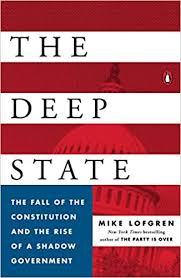 With all this said, the proposals in It’s Time to Fight Dirty aren’t actually the worst “dirty” plans to undermine the Constitution. For example, some have proposed “tanking” the economy to stop the reelection of a president they don’t like, by manipulating interest rates through the Federal Reserve or getting a consortium of wealthy banks, billionaires, and other entities with major financial clout to take steps that bring the economy down—“just until after the election” that they want to go their way. Or consider the rising power of the deep state, bureaucrats working within the government who simply use their influence and authority to push personal or partisan agendas—regardless of what the laws require. This is deep power. It also cuts against the positive goals of both major parties, and hamstrings their winning candidates—Reagan and Clinton, Obama and Trump, etc.
With all this said, the proposals in It’s Time to Fight Dirty aren’t actually the worst “dirty” plans to undermine the Constitution. For example, some have proposed “tanking” the economy to stop the reelection of a president they don’t like, by manipulating interest rates through the Federal Reserve or getting a consortium of wealthy banks, billionaires, and other entities with major financial clout to take steps that bring the economy down—“just until after the election” that they want to go their way. Or consider the rising power of the deep state, bureaucrats working within the government who simply use their influence and authority to push personal or partisan agendas—regardless of what the laws require. This is deep power. It also cuts against the positive goals of both major parties, and hamstrings their winning candidates—Reagan and Clinton, Obama and Trump, etc.
This should concern all voters—your power over who rules you is simply rejected and ignored. In this reality, elections matter very little. And, unlike the relatively straightforward proposals outlined above, this occurs almost entirely in secret. Even the media may take months or years to realize what’s actually going on. If the suggestions above are ill-advised, this approach is downright corrupt.
But it’s not theory. It’s already happening. The deep state threat is real, and amounts to:
- Ignoring Elections
This doesn’t mean the people ignore elections, or the media, or even our elected officials. Our freedoms are never in worse danger than when actual agents of the government, federal employees in any or all of the three branches, especially in executive agencies and courts, ignore Congress, the White House, the courts, and even the law. They make decisions, or don’t, without letting anyone else consider what is needed, and influence our lives in a thousand other little ways. Sometimes these become big issues in individual lives, but we are informed of the bureaucratic mantra: “That’s just the way it is.” This is real power. It always undermines freedom, and it frequently hurts people. It has now reached the level of pandemic, though it remains largely in the shadows. It is a serious abuse of the Constitution.
In fact, the challenge from the deep state is much bigger than most people realize. Consider the following comment by Senator Mike Lee:
“I keep two towers of documents in my Senate office. The first is only a few inches tall. A collection of all the legislation passed by Congress in [a year], it contains about eight hundred pages. The second tower, which is eleven feet tall, is a collection of regulations proposed and adopted by federal agencies in [the same year]. It contains about eighty thousand pages.
“These extraordinarily unequal towers illustrate a startling reality: The U.S. Congress no longer passes most of the federal laws, rules, and regulations that are imposed on the American people. While a mountain of those rules are decreed by an army of unelected federal bureaucrats, only about 1 percent of the rules we must live by are enacted by the most accountable branch of government—Congress.”[xi]
This dangerous reality led one author to write a chapter entitled: “Do Elections Matter?” The title of the book, written by Mike Lofgren, is The Deep State: The Fall of the Constitution and the Rise of a Shadow Government. Perhaps the most consistent theme I noticed while closely reading this book is how many congressmen, senators, and presidents from both parties are now (or have been) in numerous ways subordinate to the bureaucracy.[xii] Not officially, and not in the minds of the regular people, but actually, in real life. It is the bureaucrats who provide elected and many top appointed officials (in all three branches) with the information they use to make powerful, life-impacting decisions on many fronts, and it is usually bureaucrats (often the same ones) who implement such decisions after they are made. If the top official has questions or misgivings about the information that is provided, he/she typically turns to experts for further clarification—such experts are nearly always the same, or other, bureaucrats.
Shadow government, indeed. Unknown. Powerful. Anonymous as well, at least in any practical sense. And while many of these people have amassed decades of employment seniority, they typically face no accountability to voters. They seldom face real accountability at all.
Part III: Quantocracy[xiii]
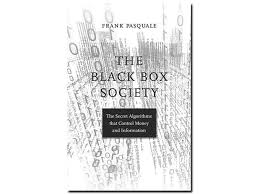 Another major attack on freedom and the Constitution comes from what Frank Pasquale terms, simply:
Another major attack on freedom and the Constitution comes from what Frank Pasquale terms, simply:
- The Black Box Society[xiv]
This consists of a number of secret algorithms, owned and utilized by various corporations and government agencies. These algorithms, and those who control them, exert significant power over people, organizations, and even governments. They interfere in our elections (all of them, at least at the national level, and many others as well), and in those of other nations. They are even more shadowy than the deep state, and many of them operate without governmental oversight—working for banks, big tech, consulting organizations, Wall Street and Silicon Valley firms, investment, finance, big data, and governmental intelligence agencies in the U.S. and abroad. Orwell’s warning is now reality: they are watching. Some for profit, others in the name of security, still others for information, influence, and/or power.
According to Pasquale, and the ample research he shares in his book The Black Box Society, algorithms and their proprietors literally “control money and information” in the current economy—not only in the United States but around the world.[xv] Pasquale wrote: “As technology advances, market pressures raise the stakes of the data game. Surveillance cameras become cheaper every year; sensors are embedded in more places. Cell phones track our movements; programs log our keystrokes…”[xvi] Devices in our homes, televisions, cars and businesses listen, watch, and record. “The resulting data—a vast amount of data…—is fed into databases and assembled into profiles of unprecedented depth and specificity. But to what ends…?”[xvii] Who controls it? And who could control it next month, next year?
Whatever the answers to these disturbing questions, many of the institutions that collect and control such information about each of us also have direct power over important parts of our lives. Do we qualify for a loan? The algorithms, and those who program them and later analyze their data, decide. Do our politics lean Left or Right, and based on this what news stories and feeds will appear when we search for information online? Will our messages sent be delivered, or “lost”, “masked”, “shadowed”? Will the things that appear when we search online support our leanings, or purposely seek to change our views? Can third parties pay for what they want us to see and read? Can they, in effect, buy us, by buying the information they want us to encounter—information tailored specifically to each of us, digitally individualized, designed to sway our specific beliefs and actions in ways that benefit the buyers? Will they guide us to the kind of news, purchases, investments or connections we want, or those that someone, somewhere, has determined would be best for us? Or for them? All of this is within the power of Black Box algorithms. Moreover, this is already the norm in many ways.
Important question: Is such power subject to any limits, checks or balances, even when it is wielded by government entities or agencies? If not, this undermines the Constitutional structure of adequate limits, checks and balances on all powers delegated to the federal government.
Obviously the Framers didn’t specifically strategize Constitutional safeguards against the government operating (or piggy-backing) algorithms to electronically data mine or apply predictive analytics toward the citizens. But their intent in this arena is clear from the Fourth Amendment language concerning protections from searches of “persons, houses, papers, and effects.” Freedom is undermined when personal or business information is being collected, stored, owned, or analyzed by government or other power organizations—whether it is called “mining”, “surveillance”, “data”, “analytics,” “metadata”, “sessionization”, “mix modelling”, “stemming”, “event processing”, or anything else. This applies to “cloud”, “cluster”, “lake”, “IoT”, “ETL”, “CEP”, “hive”, and anything else that originally belongs to or comes from one person or private group.
Dressing it up in technical jargon doesn’t make it okay for the government or any other powerful computationally-enhanced entity to just take it, or use it, no matter how fancy the math. Perhaps the United States needs to follow the example of Estonia and teach computer coding to all students in elementary schools.[xviii] If our citizens are going to rule their own nation, they need to read and understand our Constitution, and perhaps also read and understand the codes and algorithms their government and other entities can use to control the people.
“We hold these truths to be self-evident, that all men are created equal, except those who code, and especially those who hire the coders and control the coded algorithms and information: some are more equal than others…”
Part IV: The Big Twelve
Orwellian references aside, today’s American citizen is at times alarmingly unaware of the threats to freedom. Consider, for example, the following “declarations” proclaimed by Google in its early years, and still espoused by many tech industry insiders in the U.S. and abroad:
- “We claim human experience as raw material free for the taking. On the basis of this claim, we can ignore considerations of individuals’ rights, interests, awareness, or comprehension.”[xix]
- “On the basis of our claim, we assert the right to take an individual’s experience for translation into behavioral data.”[xx]
These are the first two of six such declarations. The others claim the right to own whatever data they take, and to use it however they choose.[xxi] The message is clear, albeit shocking: Someone owns us. This is not good for freedom, except the kind of elitist “freedom” (license) that does whatever it wants, whatever it can get away with. One author called these six declarations the beginning of a new “age of conquest”.[xxii] The strong conquer, rule, and label it “freedom”, “democracy”, “social democracy”, or whatever they choose to call it. This new reality, the new economy, if it succeeds, is built on the poignant question: “Are we all going to be working for a smart machine, or will we have smart people around the machine?”[xxiii] Either way, the hierarchy is top-down, with most people living as part of the “down”.
The real question is right in front of us: “Who knows? Who decides? Who decides who decides?”[xxiv] If so much information about you is legally owned by a Black Box somewhere, and those who control it, and if the owners have all the rights concerning this information, what parts of you are owned by others? And if the owners have the right to convert this information into behavioral data, to analyze it and use it to model your tendencies, to buy and sell it to others, and to directly influence your choices using this same data, how much does this impinge upon your freedom?
For example, if there are five possible paths for a baby to take when he crawls through the doorway leaving his room, but he can only actually see or hear three of these paths, is he really free to take either of the two paths that he can’t detect? This logic applies to the information we access, and all entities (governmental, corporate, and combined) that gather and utilize information about us. If there are five options we can choose from in making a life decision, big or small, and the data collected about us is used to ensure that we are only informed about three of these options, is our freedom reduced? (Some would say “stolen”, or “usurped”.) If a for-profit entity like a bank or corporation does this, what term would we use to describe this action?
What about a “for-power” organization such as a government, activist media outlet, big tech firm, activist online platform, or political consultant hired to target certain voters to make specific choices on election day? How much does such a consultant get paid for your vote? And are such payments for votes legal? What if the payments go to First-Amendment-protected media organizations that are compensated specifically to influence your vote—albeit “indirectly” by paid advertisers who are part of the side arrangement? Can votes be bought? If so, can they also be sold? What if those same media or online platform organizations receive government subsidies, contracts, or tax breaks—and the way they sort and deliver information to you, and how you vote based on the information they provide (or withhold), impacts the level of money (or resistance) they receive from the government?
“Black Box”, indeed…
We are in the “undiscovered country” of 21st Century governance, legality, morality, psychology, technology and business. Which rules are new? Which do we know about? What don’t we understand?
It is this last question that always leads to the loss of freedom—from Ancient Greece, Babylon or Egypt to medieval Italy or modern Ukraine, Egypt, Ohio, or California. Arrogantly, in the United States we tend to think we are on side of “knowledge”. But do we fluently speak R, Python, or Julia, not to mention the really cutting edge dialects of digitized power? Have we even heard of these, or know why they matter? We don’t know what we don’t know—yet we the citizens are supposed to be in charge of our nation. According to Forbes, in 2019 “Data Science is the best job in the U.S. for the last three consecutive years.”[xxv] But how many people with these jobs make the actual decisions—the big ones that steer society? Answer: none. They work for the decision makers, corporate and governmental.
How many government and corporate projects, and technologies, are now dedicated to “behavioral modification”? And do they mainly target conservatives and libertarians, or liberals and progressives? While the blue and the red argue about the issues of the day, passionately pointing fingers at each other, the quiet answer is unflinching: Both. All. Everyone.
We are at times duped by the sideshow. The nightly news broadcasts and hourly feeds keep us tied to the reality-TV shows we call political news. But the worst assaults on freedom frequently happen off-stage. Unless we know where to look, we don’t even notice. We think the news is real. It is often a lot more like clever theater. Is the answer to learn coding, to study C++, SQL, and other big data languages? Or to become a data scientist and infiltrate Silicon Valley? Is working for the “big nine” the path to leadership in our time?[xxvi] The “big nine” are Amazon, Google, Facebook, Tencent [China], Baidu [China], Alibaba [China], Microsoft, IBM and Apple. The “big twelve” are the same corporations plus the big-data arms of the U.S. government, the Chinese government, and the Russian government, and the workers and thinkers in the “big twelve” community are in some ways more closely connected than most Americans are to each other. The divisions between them, especially those based on the letterhead in their offices,[xxvii] are often much less significant than the blue/red divide in American life. The real story is happening, but often goes unnoticed.
In short, the solutions won’t likely come from within the technology institutions or culture, mainly because expertise is now a “for-hire” sport, not a “change the world” activity. Working for an employer almost always means furthering their agenda. To effect significant change, in contrast, one must engage more entrepreneurial pursuits. Enterprise remains by far the most effective vehicle of innovative leadership.
Part V: Three Steps to Kill the Constitution
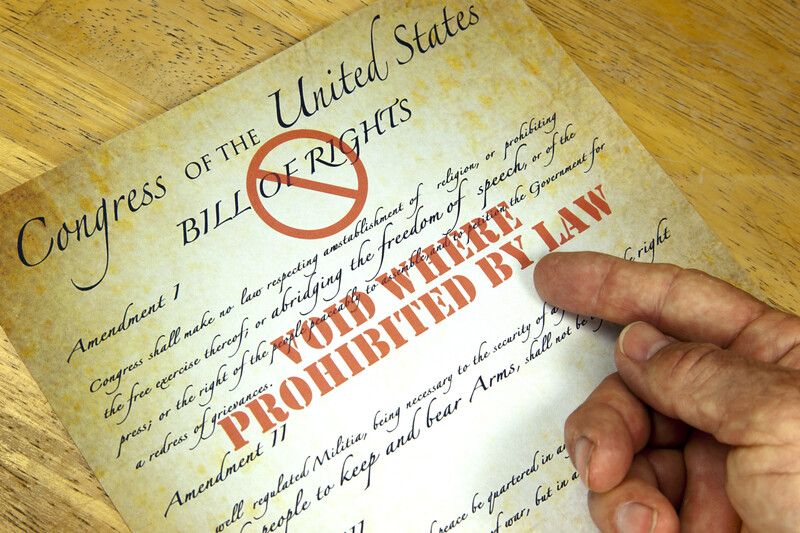 In this atmosphere, with the U.S. Constitution pulling in one direction and so many opposing forces pulling the other, how can humanity’s best chance at genuine freedom win the day? The Framers were clear from the very beginning that the Constitution’s success depended on the regular people. If they couldn’t rise to the occasion, the Constitution wouldn’t last. Benjamin Franklin put it succinctly. When asked by a citizen what kind of government the Convention had created, he replied: “A republic, if you can keep it.” He put the onus for Constitutional success on the regular people. It remains firmly in the same place today, though few people actually realize it.
In this atmosphere, with the U.S. Constitution pulling in one direction and so many opposing forces pulling the other, how can humanity’s best chance at genuine freedom win the day? The Framers were clear from the very beginning that the Constitution’s success depended on the regular people. If they couldn’t rise to the occasion, the Constitution wouldn’t last. Benjamin Franklin put it succinctly. When asked by a citizen what kind of government the Convention had created, he replied: “A republic, if you can keep it.” He put the onus for Constitutional success on the regular people. It remains firmly in the same place today, though few people actually realize it.
In a sense, “killing” the Constitution in our day is an easy task. Get the people to forget it, ignore it, and fail to study it closely or frequently. Check! Done. Step one is accomplished.
The other two steps have proven more difficult, despite the efforts of the sharpest minds elite money can buy and the generational funding of massively endowed and funded universities, trusts, media corporations, K-Street special interest lobbyists, the great banks, and a host of storied private foundations and think tanks. The combined wit and treasure of the elite classes haven’t quite been able to pull it off.
This is all a shocking surprise, to tell the truth. How can the ignorant masses face off against the biggest and best and richest and most ruthless, and keep coming out on top—without even understanding why, and in most cases without even realizing what they’re doing? It defies logic.
The challenge resides in this little-publicized fact: the American Framers predicted the elite, multigenerational onslaught against their most important work (the U.S. Constitution), and they drummed up a little “algorithmic computational code” of their own. So far, it’s been battered, repeatedly put under siege, and even cracked a few times, but it hasn’t quite broken. Much of the “code” remains intact, and the “algorithms” have proven both resilient and, shockingly, self-healing and self-improving.
The Constitution Code
The Framers’ formula is, in a way, a self-protecting AI. Every American should know it and understand it. But very few do. Here’s how it works:
- Governments exert power.
- This is good when the power is used to protect the life, liberty, property, and inalienable rights of the citizens.
- It is bad when that power is used against the people, usually by elite groups (inside or outside the government) striving to increase their own power and status at the expense of the masses.
- The challenge is that no group other than the masses ever adequately protects the people’s interests and inalienable rights, yet the masses themselves tend to get distracted from doing this on their own.
- The solution to this dilemma begins with dividing the elite groups of power into separate cliques and convincing/incentivizing them to limit, check and balance each other—hopefully dissuading them from joining forces and taking away the rights of the people and simultaneously giving themselves control of the nation’s resources.
- Such a solution is complex and difficult, but can be achieved by what Jefferson called “dividing and subdividing government” in multiple ways that keep elites from combining their forces against the masses. The key is to keep the elites focused on battling each other.
- The U.S. Constitution established just such a system and result.
- It had various initial flaws, particularly slavery, but the overall structure incentivized improvements over time; many of the flaws were fixed, and the basic direction and protections grew in strength and momentum. Elites battled each other in numerous ways, but the masses unwittingly kept most of their freedoms intact. The process was painful and imperfect, but it kept improving, albeit not rapidly. Groups with fewer freedoms slowly gained more, usually without reducing the overall freedoms of the whole society. The “code” worked.
- The system contracted certain viruses as time passed. One, the old virus of class division, infiltrated the code largely by reviving political party conflict. The parties grew in power, and threatened the entire balance.
- Another virus, also an old standby of past governmental decline, came in the form of elite corruption in the halls of power. This grew over time, patiently spreading its tentacles into institutions of influence—both public and private. The two viruses learned to work together, mainly through political parties and other special interests (including academia, media, and big business).
- Both of these dangerous viruses wormed into the Framers’ code, but found themselves strangely limited. They were able to flourish, but not win. Both operated on the assumption that power, wealth, and knowledge eventually win the day, only to discover that the Framers had anticipated this and prepared accordingly. All the power, education, expertise and funding the elites could bring to bear were thwarted by the Framers’ “algorithms”—the people didn’t wither under such attacks (as expected, based on thousands of years of historical precedent), nor did they try to directly fight back (as also anticipated). Instead, they simply took note of, or even ignored, the plans of elites. This was quite unexpected, and quite unprecedented. The Framers’ “code” thrived.
- But how? How did the masses win in such circumstances? How did the “code” change things? The answers are unconventional and, as mentioned, largely unprecedented. Benefiting from the Founding model, the people exerted voting power in a strange way: regardless of the words of experts, or the powerful spin of academia and media and money, they instinctively pushed back against much of what the elites promoted. The masses seemed to have a sixth sense in these matters. If the elites wanted it, the voters pushed against it. Whatever the elites did to promote their agenda, the regular people quietly, usually without openly realizing it, sensed the pressure and voted against it. Sometimes they failed to do this in a single election, and more rarely for two consecutive elections. But never for three or more. No matter the actions, plans, schemes or grand strategies of the elites, the masses instinctively voted the contrary. They did this even when political parties rose up and tried to inflame the masses to extreme reactions. Many were fooled by this powerful strategy. But when the elections came, the electorate pushed back against the wishes of the elites. Not logically, but emotionally. And, again, they did this quietly, in most cases without fanfare. Elites often didn’t actually know what was coming until election night. This happened numerous times in modern day. In the recorded annals of history, this was new. The Framers’ code created a system where the people, the masses, experienced a new power, a new sense of when elites are pushing for something, and how strongly they are pushing, and a corresponding incentive to push back en masse.
- This pattern indeed flew in the face of three millennia of written history, but the Framers, who knew this history as well as any generation before or after, coded it into the cells, cell walls, and very syntax of the system. And it held, despite massive pressure brought against it in multiple formats and from all directions.
- It still holds today.
When the U.S. Constitution has been altered by legitimate Amendment, this Framers’ “code” has strengthened. When it has been circumvented or diluted by “dirty” tricks, weaknesses have appeared. Note that this includes both unconstitutional changes (such as Court decree rather than following the Amendment process, etc.), and also alterations that are technically not unconstitutional, but are still “dirty” because they violate the intent and design of the Framers. Again, it’s worth repeating that both major political parties are guilty of many dirty tricks of this sort.
Now, down to details:
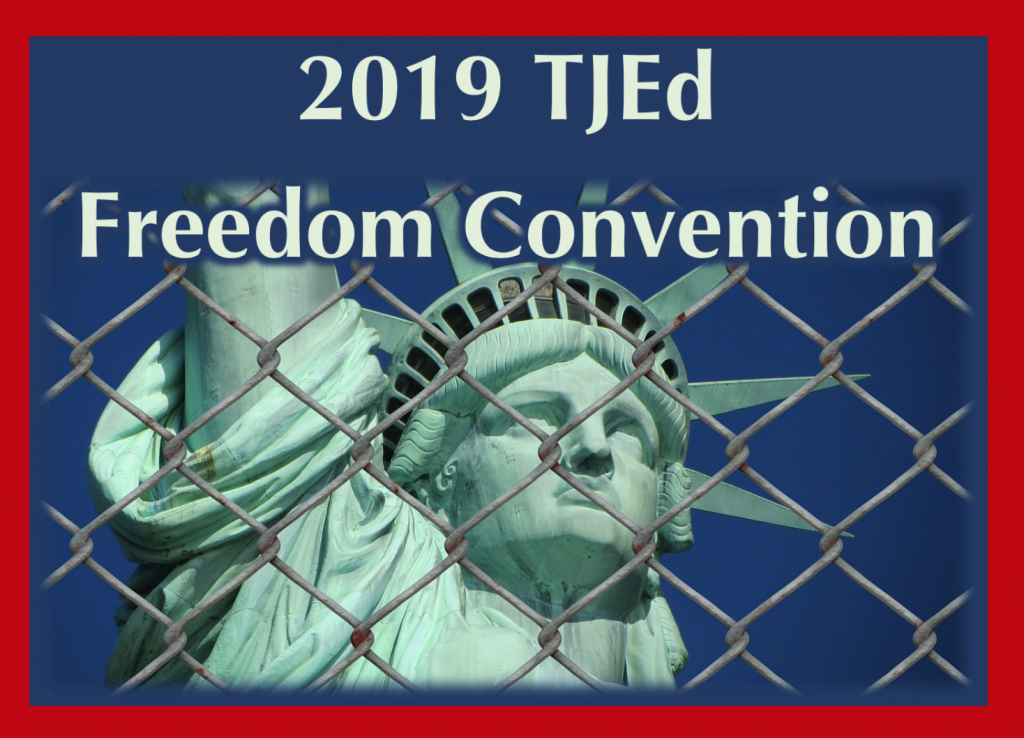
https://tjed.org/product/2019-tjed-freedom-convention/
Step One of Killing the Constitution is to get the masses to shirk their duty to study, know, revere and masterfully apply the Constitution. As mentioned, this is a fait accompli. The enemies of the Constitution have won this part of the battle, at least for now.
Step Two is to get the masses to stop instinctively pushing back against elite agendas and proposals that in any way raise elites above the people and threaten to lessen the freedom or rights of the regular people. To date this has been repeatedly and aggressively attempted, but it hasn’t worked. Not in big ways. The Constitutional code has been weakened some, but not beaten. The Framers’ “algorithms” are working.[xxviii] Note that they work in part by pitting elites on the Left against elites on the Right, and vice versa. While these opposing camps of elites think they are battling each other, they frequently serve to warn the masses about each other—greatly influencing elections, but not in the way elites expect. Elites on both sides tend to believe that when they “expose” elites on the other side they will strengthen their own side—the reality tends more to exposing all elites. Again, this was part of the Framers’ intent, or “code”.
Step Three is to get the few on the side of the masses who deeply understand the code (Albert Jay Nock called them “the Remnant”) to give up, switch sides and join the elites, or stop passing on Remnant-level knowledge and depth to the rising generations. This has proven impossible. The enemies of the Constitution have achieved no significant victories concerning this Step. Today’s Remnant are strong—people who love freedom and understand the Constitution deeply, one could say “algorithmically”, at the level of the Framers themselves.
Conclusion
Throughout the history of free nations, there are constant attacks on freedom and the principles upon which freedom is built. This remains the rule in our world today. The U.S. Constitution, under which more genuine freedom has been experienced by more people than in any other government in recorded history, is a powerful framework for freedom, and it is the best hope for continued freedom for the masses (and also the elites) in the years and decades ahead. Attempts to undermine the Constitution are many. They appear in multiple ways, both old and new, each year, many times a year, employing a variety of sources, methods, and tactics.
This will no doubt continue as long as we are free. As such, it is a good thing, an ongoing sign that people are using their freedoms to explore many options, question what works, and seek solutions to the real problems we still face. But freedom is not guaranteed. Historically, it is quite fragile. It only lasts when the people effectively stand up for it. It disappears when the masses fail to demand it. It is always, as Ronald Reagan warned, just one generation away from extinction. If we don’t protect it, we will lose it. If we are distracted, too busy, or too lazy or ignorant to fight for it, we deserve to lose it.
As mentioned, the First Step in destroying the Constitution is already accomplished. The Third will never be achieved. It is to the Second Step that the enemies of freedom amass their energy. They wield the might and power of all the money in the world, the wit and wisdom and will of the biggest and most prestigious institutions on earth, and the force of many in government, banks, universities, media outlets, corporations, foundations, experts and armies.
Against this stands the yet unexplained habit of the American people to sniff out elite schemes and vote them down, sometimes swinging Right and other times Left in a seemingly illogical, uncanny, and incredibly potent pattern of effective choices—decade after decade. Their actions are far from perfect, and they are not coordinated, yet so far they have kept the regular people’s place above all the polish, erudition and stratagems of the world’s so-called “best and brightest”—those in financial and political power.
Still, little by little, the enemies of freedom whittle away around the edges. Over time, this reduces freedom, slowly but surely. Today this erosion is approaching a serious danger point—especially if “dirty tricks” steal away the Constitution in ways that further undermine its effectiveness. We are living in the times described by W.B. Yeats:
The best lack all conviction, while the worst
Are full of passionate intensity.
Will the American voters at some point lose their proven “sixth” sense of quietly rebuffing elite agendas? If so, will this happen soon? Or, more specifically, will those who hate our Constitutional freedoms find ways to destroy the system that endows the regular people this power? The pressure to do so continues to build.
(For more on this topic, including effective solutions, read Oliver DeMille’s book Freedom Shift: 3 Choices to Reclaim America’s Destiny>> )
*Books Reviewed:
- It’s Time to Fight Dirty: How Democrats Can Build a Lasting Majority in American Politics, David Faris, 2018/2019, Brooklyn, New York and London: Melville House
- The Black Box Society: The Secret Algorithms that Control Money and Information, Frank Pasquale, 2015, Cambridge, Massachusetts: Harvard University Press
- The Deep State: The Fall of the Constitution and the Rise of a Shadow Government, Mike Lofgren, 2016, New York: Penguin Random House
NOTES
[i] David Faris, 2018, It’s Time to Fight Dirty: How Democrats Can Build a Lasting Majority in American Politics
[ii] Ibid.
[iii] Ibid.
[iv] Ibid.
[v] Ibid.
[vi] Op. Cit., Faris
[vii] No such party actually exists, at least not as such; hopefully, of course, nothing of the sort ever will, or get anything near 1% support in the electorate.
[viii] Ibid.
[ix] Ibid.
[x] Ibid.
[xi] Mike Lee, 2015, Our Lost Constitution: The Willful Subversion of America’s Founding Document
[xii] Mike Lofgren, 2016, The Deep State: The Fall of the Constitution and the Rise of a Shadow Government
[xiii] Quantocracy: Government Rule by Algorithms and Quants
[xiv] Frank Pasquale, 2015, The Black Box Society: The Secret Algorithms That Control Money and Information
[xv] Ibid.
[xvi] Ibid.
[xvii] Ibid.
[xviii] Questions: Does Estonia still do this in 2019? Have any other nations followed suit?
[xix] Cited in Shoshana Zuboff, 2019, The Age of Surveillance: The Fight for a Human Future at the New Frontier of Power
[xx] Ibid.
[xxi] See ibid.
[xxii] Ibid.
[xxiii] Ibid.
[xxiv] Ibid.
[xxv] Cited in bigdata-madesimple.com
[xxvi] Amy Webb, 2019, The Big Nine: How the Tech Titans and Their Thinking Machines Could Warp Humanity
[xxvii] Anachronistic? Probably.
[xxviii] The American Founding era phrase for what we might term a sort of political “algorithm” was “auxiliary precautions”.
Category : Aristocracy &Blog &Book Reviews &Business &Citizenship &Community &Constitution &Culture &Current Events &Economics &Education &Entrepreneurship &Featured &Foreign Affairs &Generations &Government &History &Independents &Information Age &Leadership &Liberty &Mission &Politics &Producers &Statesmanship &Technology
The Jefferson-Madison Debates: Reopening the American Mind
September 12th, 2018 // 8:15 am @ Oliver DeMille
Challenges for the Millennial Generation (and Z)
“Miss Amelia prayed as if the Lord were ten million miles away,
and she would be surprised to pieces
if she got anything she wanted.”
—Gene Stratton-Porter, Laddie
THE PROBLEM?
 Millennials. Or, as they are frequently called by critics, the “Snowflake Generation”. Considered by some the weakest generation in the last hundred years, and criticized, fairly or not, as “the Me Me Me generation…lazy, entitled narcissists who still live with their parents”[1] until age 30 or beyond. Born after 1984, the oldest of them are 30-34, the youngest (born 9/11), sometimes called Generation Z) are still 9-17. Today’s older teens and “twenty-somethings” make up the bulk of this group. The typical introduction to Millennials and Z goes something like this:
Millennials. Or, as they are frequently called by critics, the “Snowflake Generation”. Considered by some the weakest generation in the last hundred years, and criticized, fairly or not, as “the Me Me Me generation…lazy, entitled narcissists who still live with their parents”[1] until age 30 or beyond. Born after 1984, the oldest of them are 30-34, the youngest (born 9/11), sometimes called Generation Z) are still 9-17. Today’s older teens and “twenty-somethings” make up the bulk of this group. The typical introduction to Millennials and Z goes something like this:
“Millennials got so many participation trophies growing up that…40% believe they should be promoted every two years, regardless of performance.”[2]
Large numbers of them are “technology addicted” and struggle at “keeping a job or a relationship”.[3]
On university campuses, the Millennial/Z’s have headlined numerous trends hailed by critics as spreading emotional weakness. For example, though college was once applauded as a place for young people to challenge themselves intellectually and emotionally by learning a diversity of ideas, the opposite is now true. In a report aptly titled “The Coddling of the American Mind”, The Atlantic noted that in “the name of emotional well-being, college students are increasingly demanding protection from words and ideas they don’t like, and seeking punishment of those who give even accidental offense…. [It is] disastrous for education—and likely to worsen mental health on campus.”[4] Learning opposite views, and how to combat them, is increasingly absent in many classrooms and departments.
 This has gone so far that some students at Harvard Law School recently called for professors “not to teach rape law…lest it cause students distress.”[5] Even discussing or pointing out the wrong side of bad things is in many cases becoming taboo.[6] The article questioned: “What are we doing to our students if we encourage them to develop extra-thin skin just before they leave the cocoon of adult protection?”[7] Answer: training them to seek a similar cocoon even as adults, typically from the government. This is the opposite of what Thomas Jefferson believed universities should be. As the founder of the University of Virginia, he wrote:
This has gone so far that some students at Harvard Law School recently called for professors “not to teach rape law…lest it cause students distress.”[5] Even discussing or pointing out the wrong side of bad things is in many cases becoming taboo.[6] The article questioned: “What are we doing to our students if we encourage them to develop extra-thin skin just before they leave the cocoon of adult protection?”[7] Answer: training them to seek a similar cocoon even as adults, typically from the government. This is the opposite of what Thomas Jefferson believed universities should be. As the founder of the University of Virginia, he wrote:
“This institution will be based on the illimitable freedom of the human mind. For here we are not afraid to follow truth wherever it may lead, nor to tolerate any error so long as reason is left free to combat it.”[8]
The Atlantic closed this article with the following words:
“We believe that this is still—and will always be—the best attitude for American universities.”[9]
Today, in contrast, words that are considered offensive are banned from many campuses, as are many ideas or speakers who differ from the politically correct norm. Such schools, and many of their Millennial/Z students do, in fact, appear “afraid to follow the truth wherever it may lead”, or even to listen.
 Surprisingly, the military is dealing with many of the same issues. On the one hand, as James Fallows wrote in The Atlantic in January 2015: “Americans admire the military as they do no other institution. Through the past two decades, respect for the courts, the schools, the press, Congress, organized religions, Big Business, and virtually every other institution in modern life has plummeted. The one exception is the military…. In a Gallup poll last summer, three-quarters of the public expressed ‘a great deal’ or ‘quite a lot’ of confidence in the military. About one-third had comparable confidence in the medical system, and only 7 percent in Congress.”[10] In 2018 American confidence in the military is still at 74%.[11] (Confidence in newspapers is 23%, public schools 29%, banks 30%, courts 22%, TV news 20%, organized religion 38%, small business 67%, big business 25%.[12])
Surprisingly, the military is dealing with many of the same issues. On the one hand, as James Fallows wrote in The Atlantic in January 2015: “Americans admire the military as they do no other institution. Through the past two decades, respect for the courts, the schools, the press, Congress, organized religions, Big Business, and virtually every other institution in modern life has plummeted. The one exception is the military…. In a Gallup poll last summer, three-quarters of the public expressed ‘a great deal’ or ‘quite a lot’ of confidence in the military. About one-third had comparable confidence in the medical system, and only 7 percent in Congress.”[10] In 2018 American confidence in the military is still at 74%.[11] (Confidence in newspapers is 23%, public schools 29%, banks 30%, courts 22%, TV news 20%, organized religion 38%, small business 67%, big business 25%.[12])
On the other hand, a negative term now used in some circles to describe America is “Chickenhawk Nation”, because many Americans are willing for the United States “to go to war, as long as someone else is going.”[13] While three-fourths of Americans admire the military, less than a quarter support their children joining any of the armed services.[14] Moreover, a majority of parents actively discourage or oppose military service by their own children.
Beyond this, only 29% of Millennials now meet the eligibility requirements for military service, causing shortfalls in recruiting needs.[15] And in recent years, “the number of eligible enlistees has been smaller and smaller.”[16] This is largely a matter of physical readiness—or in this case, it’s lack.[17] The snowflake trend has had a significant impact on the fitness levels of American youth.
 On the political front, in the post Bernie Sanders era, many Millennial/Z’s support government-mandated free college, free housing, a monthly wage for everyone whether or not they have a job, and the appeal of “socialism.” Many even like the word or label of “socialism”, with over half of Millennials self-identifying as “socialist”.[18] But, ironically, they have little appetite for the “struggle of the working class to create a socialist society.” [19] That’s too much work. And they certainly aren’t looking for “the long revolution” to bring about socialism.[20] They just want socialist programs handed to them by big government, without the struggle, sacrifice, or effort.[21] Many Millennial/Z’s seem to feel they “deserve” such programs, without doing anything to earn them.[22]
On the political front, in the post Bernie Sanders era, many Millennial/Z’s support government-mandated free college, free housing, a monthly wage for everyone whether or not they have a job, and the appeal of “socialism.” Many even like the word or label of “socialism”, with over half of Millennials self-identifying as “socialist”.[18] But, ironically, they have little appetite for the “struggle of the working class to create a socialist society.” [19] That’s too much work. And they certainly aren’t looking for “the long revolution” to bring about socialism.[20] They just want socialist programs handed to them by big government, without the struggle, sacrifice, or effort.[21] Many Millennial/Z’s seem to feel they “deserve” such programs, without doing anything to earn them.[22]
Such young people are, in short, on a path toward something far removed from traditional American values or freedoms. They will become the biggest block of eligible voters in the 2018 midterm elections,[23] though most of them didn’t actually vote in 2016 and probably won’t until 2020 or beyond.
Is this generation exhibiting the characteristics we want for America’s future? After all, the word “generation” comes from “gene”, or “genes”. What we choose becomes who we are, and influences what we pass on to posterity.
 A more immediate question: Why are many Millennial/Z’s this way? Many analysts blame it mostly on helicopter parenting—a generation over-programmed, over-protected, promised success without sacrifice or hard work by doting parents who sheltered their children from hard things. As one report from England put it: “Millennials are struggling at work because their parents ‘gave them medals for coming last’”.[24] Of course, there are exceptions to these patterns in the Millennial/Z generation, but the trend is still sobering. A lot of Millennial/Z’s do expect college, promotions, income, work and relationships to be easy, and when they aren’t, they expect the government to intervene and somehow make things easy for them. This will certainly impact our politics and policies—and soon.
A more immediate question: Why are many Millennial/Z’s this way? Many analysts blame it mostly on helicopter parenting—a generation over-programmed, over-protected, promised success without sacrifice or hard work by doting parents who sheltered their children from hard things. As one report from England put it: “Millennials are struggling at work because their parents ‘gave them medals for coming last’”.[24] Of course, there are exceptions to these patterns in the Millennial/Z generation, but the trend is still sobering. A lot of Millennial/Z’s do expect college, promotions, income, work and relationships to be easy, and when they aren’t, they expect the government to intervene and somehow make things easy for them. This will certainly impact our politics and policies—and soon.
SOLUTIONS
“The government and its chiefs do not have
the powers of the mythical Santa Claus.”
—Ludwig von Mises
 Despite the Tiger-Mom vs. Cool Mom debates,[25] many parents of Millennial/Z’s “have now realised [British spelling] that their well-intentioned parenting strategies have backfired.”[26] As a result, a number of people are trying to fix what many consider the “helicopter-parent/snowflake/wimpy-generation” debacle.
Despite the Tiger-Mom vs. Cool Mom debates,[25] many parents of Millennial/Z’s “have now realised [British spelling] that their well-intentioned parenting strategies have backfired.”[26] As a result, a number of people are trying to fix what many consider the “helicopter-parent/snowflake/wimpy-generation” debacle.
For example, in 2016 Parents.com listed the number one trend in parenting as “Saying bye-bye to helicoptering…just being more laid back when it comes to managing kids’ lives and schedules.”[27] In another trend, Free Range Parenting has recently popularized the “concept of raising children in the spirit of encouraging them independently and with [less] parental supervision”, including more “realistic personal risks.”[28]
Another example: A youth-initiated movement came from teens Alex and Brett Harris in their book Do Hard Things, which called upon youth to expect more from themselves and move past the limiting beliefs of helicopter parents. The subtitle of this book says it all: A Teenage Rebellion Against Low Expectations. In our day and age, and any other time in world history for that matter, a true “rebellion against low expectations” can only be accomplished by doing hard things, including a lot of hard work.
They wrote: “Most people don’t expect you to understand what we’re going to tell you in this book. And even if you understand, they don’t expect you to care. And even if you care, they don’t expect you to do anything about it. And even if you do something about it, they don’t expect it to last. We do.” This bestseller helped a number of Millennials embrace the idea of “doing hard things”, even in the face of a society that too often militates against teens or parents who seek—or even allow—anything difficult. Author Connor Boyack shows young people and their parents how to embrace this at an even higher level in his excellent book Passion-Driven Education.
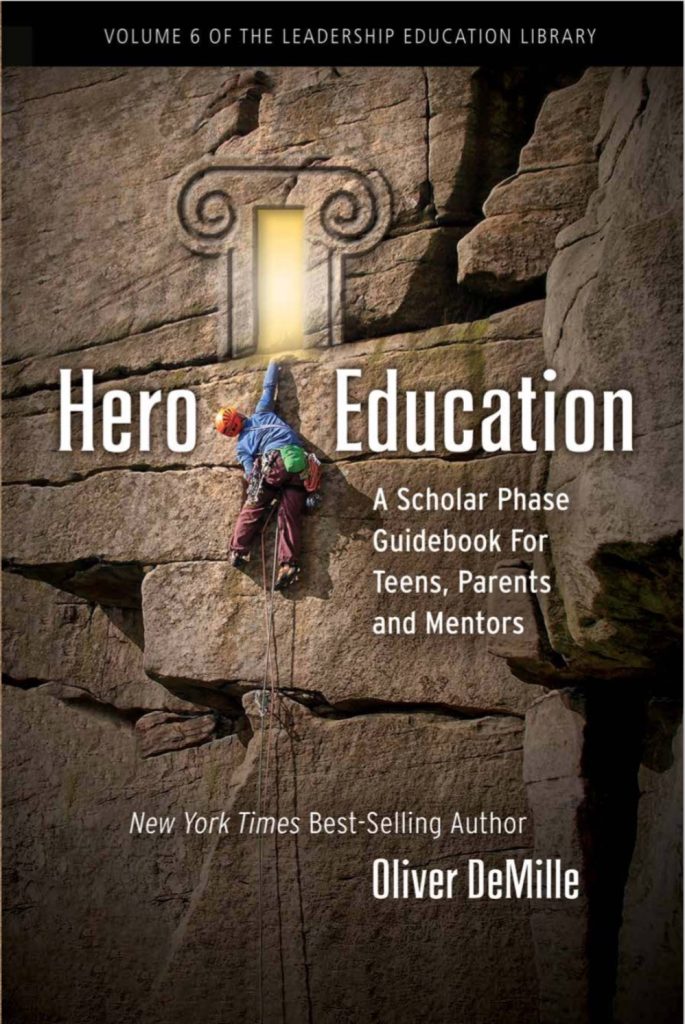 Despite some real progress for a few families and youth in this arena, for far too many of today’s young people the generational tide continues in the direction of easy or easier, adult-sanctioned snowflake weakness, trophies for everyone, and a culture of “blame your parents” (or your teachers, or anyone but yourself), “embrace feelings of unearned entitlement”, “turn to the government to fix anything you don’t like”, and “never take the hard path of extreme work, sacrifice, risk, and great achievement”. More and more parents are realizing the problem—the disaster, really—with this approach, and looking for an antidote.
Despite some real progress for a few families and youth in this arena, for far too many of today’s young people the generational tide continues in the direction of easy or easier, adult-sanctioned snowflake weakness, trophies for everyone, and a culture of “blame your parents” (or your teachers, or anyone but yourself), “embrace feelings of unearned entitlement”, “turn to the government to fix anything you don’t like”, and “never take the hard path of extreme work, sacrifice, risk, and great achievement”. More and more parents are realizing the problem—the disaster, really—with this approach, and looking for an antidote.
We have personally witnessed this generational struggle as we have promoted the principles of great education in our Thomas Jefferson Education (TJEd) system. Our call for Scholar Phase, an intense teen study program of voluntarily putting in massive effort and work to earn a truly great education, is often considered unrealistic by the old guard. But it has been revolutionary and incredibly successful for those (Millennial/Z’s and parents) who have risen to the challenge.
We have seen firsthand that many teens can do very, very hard things.[29] Moreover, once they get a taste for it, they frequently fall in love with the challenge.[30] This inspired me to write the book Hero Education, which builds on the theme of young people accomplishing great things by voluntary action, personal initiative, and hard work. Also, in our experience with TJEd, the best results frequently come where parents and mentors not only encourage great effort, but also lead the way—showing their teens what to do by personal example.
PART II
A RADICAL (AND SURPRISING) SUGGESTION!
“Did you ever wish with all your might that something would happen, and wait for it, expect it, and long for it, and nothing did, until it grew so bad, it seemed as if you had to go on another minute you couldn’t bear it?” —Gene Stratton-Porter, Laddie
 I recently read a report that encouraged even more success of this type. It was both intriguing and fascinating. It may be the best thing I’ve read specifically on the challenges of Millennials and Gen Z (and helicopter vs. leadership parenting) since Allan Bloom’s The Closing of the American Mind. It is found in Outside magazine, and entitled: “Rewilding the American Child.”
I recently read a report that encouraged even more success of this type. It was both intriguing and fascinating. It may be the best thing I’ve read specifically on the challenges of Millennials and Gen Z (and helicopter vs. leadership parenting) since Allan Bloom’s The Closing of the American Mind. It is found in Outside magazine, and entitled: “Rewilding the American Child.”
That’s right:
re – wild – ing
Emphasis on “wild”.
I’m so intrigued by this concept that whenever I think of it I feel this word needs a good ! ! ! to punctuate it effectively. And note that the word “rewilding” is an active verb, like learning, reading, discussing, or loving.
Or jumping, running, hiking, swimming, etc.
Profound.
The report begins:
“Overscheduled.
“Addicted to screens.
“It’s time to set our kids free.”[31]
Freedom. What a great idea. Especially applied to education.
Indeed, the recommendations go a step past free-range childhood—all the way to the wilds. Literally.
From the report:
 “Our children are in crisis…. creating a generation of entitled wimps…. Today, America’s kids are caught up in one of the largest mass migrations in human history: the movement indoors.”[32]
“Our children are in crisis…. creating a generation of entitled wimps…. Today, America’s kids are caught up in one of the largest mass migrations in human history: the movement indoors.”[32]
This is a momentous statement. Take a moment to re-read the last quote and let it sink in. This is big. Here’s more:
“Only recently have we begun to spend our lives penned in by walls, staring at screens.”[33]
Indeed, we’re living through a major development in human history. The full ramifications of this alteration from all past history are yet unknown, but it is already clear that the rise of institutionally-designed “wimpy-ness” is both real and, unless something changes, “the new normal.”
 The impact on society is drastic. This shift has coincided with a rise in the average age of young people becoming independent—with increased dependence in where they live, their finances, and their emotional development. In a reversal of progress, 30 is now the new 18. Adulthood is increasingly put off until later. Marriage, having children, accepting increased career responsibility—all are procrastinated by the bulk of Millennials. And Z’s are following suit.
The impact on society is drastic. This shift has coincided with a rise in the average age of young people becoming independent—with increased dependence in where they live, their finances, and their emotional development. In a reversal of progress, 30 is now the new 18. Adulthood is increasingly put off until later. Marriage, having children, accepting increased career responsibility—all are procrastinated by the bulk of Millennials. And Z’s are following suit.
The “Rewilding” report recommends things that will seem extreme to some, reckless to others, but get right to the core of what many consider the problem of the so-called “Wimpy Generation”.[34] These suggestions include:
“It’s time to make childhood an adventure again. Kids deserve the chance to explore nature without an agenda or a chaperone, to take risks and learn to get themselves out of trouble, to fall in love with nature…”[35]
I’m reminded of something penned by Lord Byron:
“There is pleasure in the pathless woods, there is rapture in the lonely shore, there is society where none intrudes, by the deep sea, and the music in its roar. I love not man the less, but Nature more.”[36]
A generation that seldom spends real time in the real out-of-doors is deprived of so much, too often oblivious to large swaths of learning and therefore to key parts of life, self, and purpose. Another important quote, this one from Henry James, further illustrates the challenge:
Summer afternoon–summer afternoon;
to me these have always been the two most beautiful words
in the English language.[37]
But if we’re caught in the Trapped-Indoors rut, summer differs very little from any other season. Screens are all that matter. Trees, waves, leaves, clouds, rain, even books in many cases, are foreign. Alien even.
What kind of education, or life, is this?
“Look deep into nature,” Albert Einstein is credited with saying, “and then you will understand everything better.”[38]
 Years ago I took a group of college students on a field trip many hours from home. We stayed one night at a beautiful old estate, and when we first arrived we walked through the house and around the grounds. Almost immediately, as we moved into the large fields at the back of the home, one student noticed a huge old tree and gleefully ran to it and climbed up the branches far above the ground. Several other students followed her, and they sat together in their leafy perch and talked for hours about the books we were covering in class at the time, the connections of these books to life, and other important ideas.
Years ago I took a group of college students on a field trip many hours from home. We stayed one night at a beautiful old estate, and when we first arrived we walked through the house and around the grounds. Almost immediately, as we moved into the large fields at the back of the home, one student noticed a huge old tree and gleefully ran to it and climbed up the branches far above the ground. Several other students followed her, and they sat together in their leafy perch and talked for hours about the books we were covering in class at the time, the connections of these books to life, and other important ideas.
I recently returned to the same estate, and pointed out the great tree to a couple of my own children. They marveled at it, as did I. As they climbed, I found myself surprised that more than a decade earlier I had never even considered the safety of those climbing the tree. The world has changed much during the ensuing years, and in the current environment I quickly realized that an extreme focus on safety would have been one of my first concerns if that event had happened today. To the point that I’m sure I would have told the students to climb down immediately.
That would have been tragic. Yet in our sadly “unwilded” and “newly indoor” world, things have changed, and not for the good. “The undiscovered country”, Shakespeare told us, “from whose bourn No traveller returns.” He was speaking, of course, of death. But could the same thinking be applied to the Generation of Screens—once in their grip, No Traveller really returns? Are we now prisoners of the walls and silicon processors that so dominantly define our age and control so many of today’s values?
Perhaps this goes too far, but does our concern about the loss of nature for so many young people extend far enough? Are we even aware of the problem?
One of the best things about the “Rewilding” report is that is doesn’t fall into the almost universal modern educational trap of recommending a solution for the kids only—while the parents stay inside with their thumbs addictively swiping screens. The parents are in fact counseled that to really see a change in their youth they’ll need to lead the way, by showing “them that we, too, love to play outside.”[39] If we added the words “work” and “read” to this sentence, it would be almost ideal. Plato and Aristotle would agree, I think. Thomas Jefferson, whose two favorite pastimes were walking in the wilds and reading, would certainly approve.
 The report recommends a number of options for “rewilding” our kids, including:
The report recommends a number of options for “rewilding” our kids, including:
- “Explore together”
- “Establish Boundaries”
- “Work the Farm”
- “Take back roads…”
- “Fuel their love of games…”
- “…go rafting, take backcountry ski trips, and spend long days hiking…”
- “Age-Appropriate Adventure”
- “A Deep Connection With Animals”
- “Make Sports Fun Again”
The report in Outside magazine, the September 2018 issue, elaborates on all of these and includes many more suggestions; I highly recommend it. The report notes that it is of course important to establish effective safety and other guidelines and rules in all of this, and to make good choices. (Such a disclaimer is probably NECESSARY if Boomers and Gen Xers are reading. But it increasingly appears that risk is the major ingredient missing in the lives of what so many consider the Wimpy Generation.)
In short, with wise planning and implementation, each young person’s education can be greatly improved through outdoor activities…
 HARD STOP. Here is what one Millennial/Z teen told me when I read this article with him (this exact article, the one you’re reading now). He interrupted me at this point, after the disclaimer in the paragraph above, and said: “Fine. But it is just as important, maybe more important, to help them be strong. Far too often, parents equate ‘safe’ with ‘good’, and the result is just weakness. Many kids are held back by frightened, overprotective parents. Our modern society is so skewed to the side of coddling us that strength is usually missing.”
HARD STOP. Here is what one Millennial/Z teen told me when I read this article with him (this exact article, the one you’re reading now). He interrupted me at this point, after the disclaimer in the paragraph above, and said: “Fine. But it is just as important, maybe more important, to help them be strong. Far too often, parents equate ‘safe’ with ‘good’, and the result is just weakness. Many kids are held back by frightened, overprotective parents. Our modern society is so skewed to the side of coddling us that strength is usually missing.”
When I tried to point out the need for balance in this, he interrupted again: “In truth,” he said, “strength is ultimately the only safety. Adults know this. But they act like their kids will never need to be strong.”
I tried to reiterate my point about balance, and he shook his head. “Listen to me. At some point, the kid will have to walk out into the real world. Period.” Then, after a pause, “Prepare them now. That’s what we need from parents.”[40]
THE LONELY
“‘Difficulty’ is the name of an ancient tool
that was created purely to help us define who we are.”
—Paulo Coelho
 The “Rewilding” report also points out another truly profound reality:
The “Rewilding” report also points out another truly profound reality:
“Today’s kids are lonelier than any previous generation.”[41]
This rings all too true to anyone who works a lot with youth. Modernity has taken its toll. The constant connection with screens, and indoor physical separation from other people, too often gets in the way of other more important connections—with parents, siblings, pets, nature, mentors, hobbies, work toward great goals and passions, books, talents and interests, challenging problems and overcoming them, the kind of lessons that are learned only from struggle, etc. These are seldom the skills learned on screens.
A funny joke circulating on the Internet reads something like this:
The Wi-Fi in my house went down for a few minutes
I had to spend time with my family.
They seem like good people…
But is this really funny? In Millennial/Z humor, the several youth I’ve asked assure me, it’s hilarious. For the rest of us, it’s pretty dark. (When one of my Millennial daughters read this, she said the whole joke was actually terrible. Why? Because she was horrified that the Wi-Fi went out at all. “That’s infuriating!” she exclaimed. Another daughter’s big concern was why the person didn’t have data on their phone so they could stay on the Internet even without Wi-Fi. What is she talking about????)
 Humor aside, today’s epidemic of so many teens and twenty-somethings (and even some in their thirties) who put off adult responsibility and remain weakly dependent on authority figures for…well, almost everything…may well be a natural result of the migration indoors.[42] The “snowflake” view of so many on college campuses is indicative of this trend. What is needed in today’s world—our homes, our communities, our learning environments—is a major injection of grit.[43] Of initiative, stamina, guts, and tenacity. And these things are nearly always learned away from screens.
Humor aside, today’s epidemic of so many teens and twenty-somethings (and even some in their thirties) who put off adult responsibility and remain weakly dependent on authority figures for…well, almost everything…may well be a natural result of the migration indoors.[42] The “snowflake” view of so many on college campuses is indicative of this trend. What is needed in today’s world—our homes, our communities, our learning environments—is a major injection of grit.[43] Of initiative, stamina, guts, and tenacity. And these things are nearly always learned away from screens.
In short, technology is a wonderful and powerful tool; few would dispute this. But it is not the only wonderful and powerful tool. A list of tools that are even more wonderful and more powerful include those just outlined above: parents, siblings, pets, nature, mentors, hobbies, work toward great goals and passions, books, talents and interests, challenging problems and overcoming them, the kind of lessons that are learned only from struggle, etc.
The great challenge—and fix—for Millennial/Z’s is to find and implement the right combination of ALL these tools. To be honest, this is true for non-Millennials as well. Put simply, it’s time to re-open the American mind. And get outside…a lot.
Note that doing this is going to be hard. Which is exactly what we need.
“…what you learn there doesn’t amount to a hill of beans compared to what you can find out yourself outdoors. Schoolhouses are made wrong. If they must be, they should be built in a woods pasture beside a stream, where you could wade, swim, and be comfortable in summer, and slide and skate in winter. The windows should be cut to the floor, and stand wide open, so birds and butterflies could pass through. You ought to learn your geography by climbing a hill, walking through a valley, wading creeks, making islands in them, and promontories, capes, and peninsulas along the banks. You should do your arithmetic sitting under trees…”
—Gene Stratton-Porter, Laddie
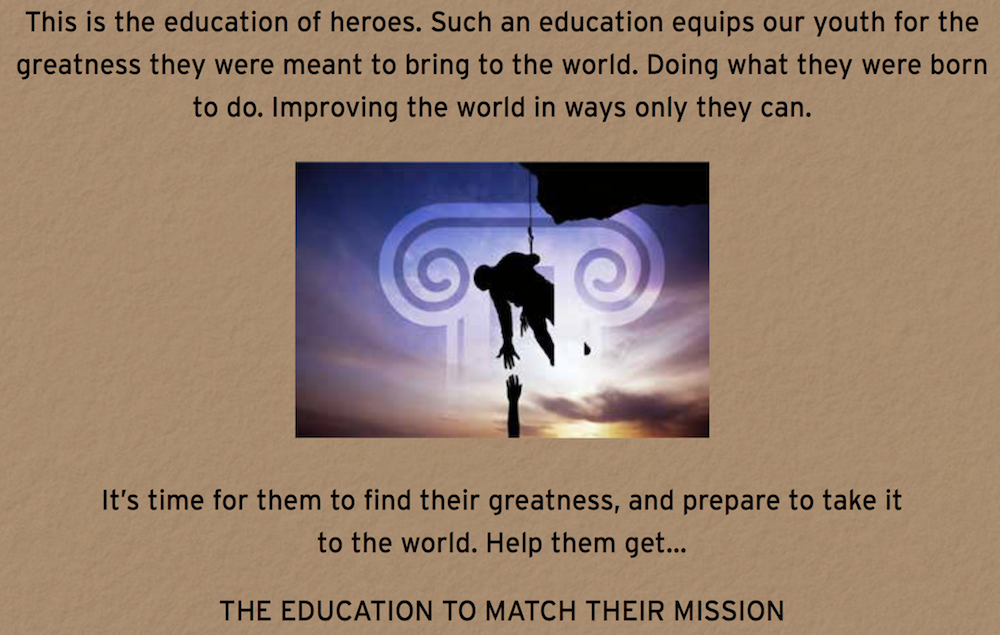
(For more on this topic, especially real solutions, see Hero Education by Oliver DeMille)
(For a Funny Video Click Here>>)
[1] Time, Joel Stein, May 9, 2013
[4] The Atlantic, Greg Lukianoff and Jonathan Haidt, September 2015
[10] The Atlantic, James Fallows, January/February 2015, citing Gallup
[13] The Atlantic, James Fallows, January/February 2015
[14] See The New York Times, Damien Cave, June 3, 2005.
[15] Military1.com, March 6, 2018
[18] American Institute for Economic Research, Max Gulker, December 2017, “Over Half of Millennials Identify as Socialist: Here’s How to Change Their Minds”
[19] See, for example: The New York Times, Michelle Goldberg, June 30, 2018, “The Millennial Socialists Are Coming”; The American Interest, Ben Judah, “What Is Millennial Socialism?”; chicagotribune.com, Heather Wilhelm, July 9, 2018, “Why are millennials so hot for socialism?”
[20] Ibid.
[21] Ibid.
[22] Ibid.
[23] See Politifact, Andy Sherman, February 13, 2018
[24] Independent.co.uk, Rachel Hosie, February 7, 2017
[25] See for example Battle Hymn of the Tiger Mother, by Amy Chua, Bringing Up Bėbė, by Pamela Druckerman, and “Are ‘Tiger Moms’ Better than Cools Moms?” (The Atlantic) by Julia Ryan, among others.
[26] Independent.co.uk, Rachel Hosie, February 7, 2017
[27] Parents.com, Melissa Willets, “6 Parenting Trends to Look Forward to in 2016”
[28] Wikipedia.org, “Free-range parenting”
[29] See Hero Education, Oliver DeMille
[31] Outside, multiple authors, September 2018
[36] Cited in Forest Therapy, 2018, by Sarah Ivens
[39] Outside, multiple authors, September 2018
[40] Ephraim DeMille (age 18 – son of my brother, William), August 2018
[41] Outside, multiple authors, September 2018
[43] See the following: Angela Duckworth, Grit; Claude Hamilton, Thick-Skinned; Claude Hamilton, Toughen Up.
Category : Blog &Citizenship &Community &Culture &Current Events &Economics &Education &Entrepreneurship &Family &Generations &History &Information Age &Leadership &Liberty &Mission &Producers &Prosperity


